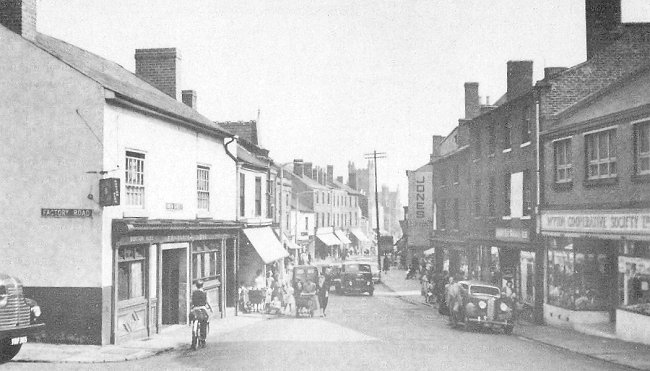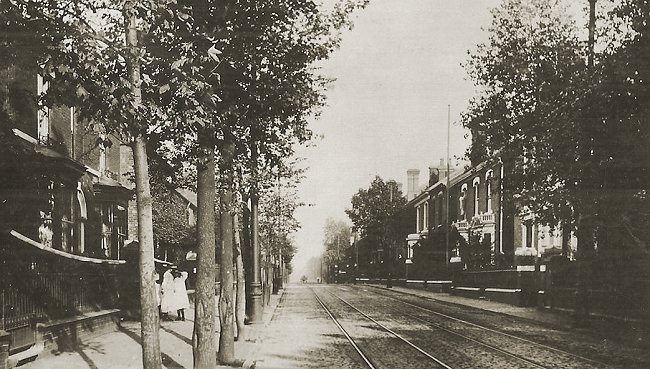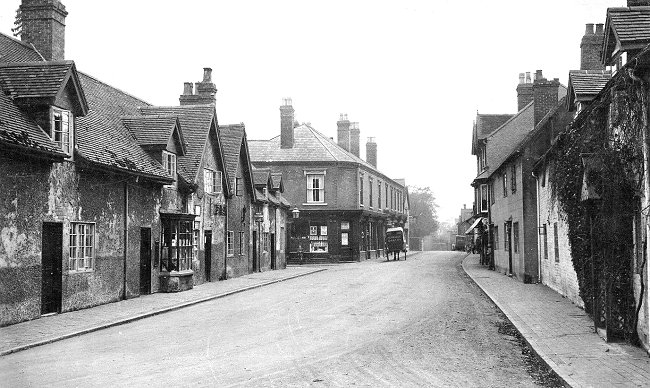|
If we are nameless then who are we?
Without our names we have no individuality, no distinct
identity. At best we become an indistinguishable part of
a huge and monolithic gathering such as the Anglo Saxons
or Victorians, the peasantry or the working class; at
worst we are lost from history and become as nothing.
The desire to be known and
remembered for who we are as separate entities with a
unique character is a powerful human emotion. That is
why our ancestors, no matter how poor, strove to avoid
the indignity of a pauper’s funeral after their death.
They feared to be laid into a mass
grave with no mark above to call out who they were; they
yearned at the least for a little plot with some
memorial, no matter how small, to let the world know
that they had once been. That longing to be known and
remembered reaches out from those gone to those living
and to those yet to come. In so doing it bonds the past,
the present and the future and provides a powerful sense
of continuity in a rapidly changing society.
It is a need that motivates family
historians to seek out the names of their ancestors as
far back as possible and to find out whatever they can
about them. In that way our forebears cease to have just
existed; instead they continue to have a living
presence.
Just as family historians
enthusiastically search for their kith and kin, so too
do local historians keenly look for the names of the
earliest people to have lived in their locality. In that
search, our place names are vital for they call out to
us to hark at what they are telling us, to notice those
who gave them their names, and to understand their
meanings.
If we do but open our ears we can
just catch hold of the men and some women who are kept
alive in the names of many of our villages, towns and
cities; and we can strain to hear how they described the
features of the land in which they lived.
Spoken and written countless times
a day they may be, but yet how rarely is the
significance of our place names appreciated. They are
indeed our signposts to the past and like all good
markers, although they cannot take us on our journey,
they can show us where to go. If we truly wish to
understand who we are, and whence we come, then it is on
the path of place names that we must tread.
Some of them in the Black Country
and in the adjoining districts reach deep into the
beginnings of Anglo-Saxon England, when bands of Angles
move up the River Trent and thence its tributaries like
the Tame – settling and taking over the land from the
British. They included extended family units
who took their name from their founder or earliest
remembered ancestor. Among them was Beorma whose
‘ingas’, people, joined him in setting up a ‘ham’, an
estate or homestead. This became known as Birmingham.
Another such kinship leader may have been Esne.
He and his people, the Esningas,
set up or else took over from the Welsh, a ‘tun, a
farmstead or manor. This was recorded in a document from
996 as Esingetun. It has changed but slightly to become
Essington. Similarly Pattingham brings to mind the
estate or homestead of the people of Patta. From the
early 600s, the Esningas, Beormingas and larger tribal
groups were brought under the sway of the Kingdom of
Mercia.
|

Owen Street, Tipton.
|
By then, those Welsh who remained
had intermarried with the newcomers and abandoned their
language. Most of their place names were replaced by
those in Old English and have forever disappeared. These
were added to with new settlements which had Old English
names from the beginning. Then there were those places which
may once have been called after a feature in the
landscape but which were renamed after a man who was
given overlordship of a manor.
Darlaston and Tipton fall into this
latter category. The ‘tun’ element means a manor and
experts have placed its common use to the period between
750 and 950. Thus Darlaston signifies the manor of
Deorlaf. The second earliest recording of it in 1262
spelled it as Derlaveston, although by 1316 its modern
form had emerged when it was given as Derlaston. As for
Tipton, it was first noted in the Domesday Book of 1086
and was put down as Tibintone, meaning the estate of
Tibba.
Willenhall is mentioned much
earlier and it is one of the earliest Black Country
place names cited in a document. In 732 it was given as
Willenhalch and as such was the ‘halh, small valley, of
Willa. Sedgley and Dudley are two other places that
remember a person. Both signify a ‘leah’ or ley, a
clearing – the one of someone called of Secg and the
other of a fellow named Dudda.
Both places are among a noticeable
number to the west of Birmingham which have this element
‘leah’ and which suggest that there was a growth of
settlements through clearings in a woodland environment
from about 750 to 950. They include Bradley, which meant
the ‘braden leah’ board clearing; Rowley, which was ‘the
ruh’, rough clearing; Horsley Heath, which had horses in
it; Bentley, which had bent grass; and Langley. This
means the ‘lang’ clearing and it would have emerged when
the local folk said lang instead of long, as they do
still in the lowlands of Scotland and parts of the north
east of England.
There are also several names which
may be connected to a man. Amblecote means either the
‘cot’, cottage, of the ‘aemel’, caterpillar, or else the
cottage of someone called Aemela. Bloxwich possibly
recalls the ‘wic’, farm, of Blocca.
|

New Road, Willenhall.
|
It is likely that Cradley means the
clearing of Cradda or Cradel, or perhaps the clearing
where cradles were got for the making of hurdle fencing.
Cradley Heath is the heathland named after Cradley.
Other place names tell us of the landscape of the West
Midlands a thousand years and more ago. When the Angles
took over the region from the Welsh, they looked with
fresh and open eyes upon the physical features that they
saw and named them accordingly.
At Caldmore the incomers
experienced a cold marsh, while at Shelfield they
spotted a ‘scelf’, a ledge or plateau on a hill.
Shelfield does indeed stand on a plateau with slopes on
all sides and it was originally given as Schelfull in
documents from the Later Middle Ages.
Elsewhere in what is now the Black
Country, there are a marked number of place names ending
in ‘al’ or ‘all’, from the Anglo Saxon word ‘halh’. This
had different meanings but in the West Midlands it was
most used to describe a shallow valley. Today it is
often difficult or indeed impossible to make out such a
nook, because urbanisation and development have too
often destroyed or obscured the original lay of the
land.
However, the valley associated with
Walsall is still visible. Although its parish church, St
Matthew’s, lies upon a limestone hill in the centre of
the modern town, the ground falls away on all sides and
there is a noticeable dip in the Bridge Street area,
where the Walsall Brook flowed. The borough of Walsall
boasts other place names including halh: Pelsall, Peol’s
nook; Rushall, the nook with rushes in it; and Blakenall,
which may mean Blaca’s nook or else the settlement at
the black nook. Further south is Halesowen, which for
many years was simply Hales – the nooks. Certainly,
coming down Mucklow Hill and with the Clent Hills before
you, it is obvious that Halesowen does lie in a
pronounced dip.
Gornall, both Upper and Lower, may
have ‘halh’ in their names but their meaning is
difficult to fathom out. Some place-name experts feel it
denotes the ‘cweorn-halh’, the water mill. However, as
David Horovitz makes plain in his outstanding work on
The Place-Names of Staffordshire, neither of the Gornals
is in a shallow valley, and Upper Gornal is on high
ground.
However, ‘cweorn’ could also mean a
place where mill stones were got and in 1801 it was
stated that excellent grind stones were dug at Cotwall
End nearby. Cotwall itself signifies the ‘cot’, cottage,
by the ‘waelle’, spring.
Ettingshall is definitely a ‘halh,
and is either the small valley of a man called Etta or
else is the ‘etting’, grazing place. It belonged to
Bilston, which was first written as Bilsetnatun. This spelling provides us with the
full meaning of the name. The old belief was that it
meant the ‘tun’, the estate, of Bill’s folk. In fact, it indicates the
settlement of the ‘saete’, folk, of the ‘bile’, meaning
the sharp ridge or pointed hill. There is a possibility,
however, that the Bil part may come instead from ‘bill’,
meaning a sword or a physical feature that was
sword-shaped.
The name Warley is not so easily
explained. Some experts feel that it is the clearing
associated with a stream called Worf; others assert that
it is derived from either the Anglo Saxon word
weofeslege or else weorfalege, both of which would
indicate a clearing for cattle.
Wordsley is another place that
pulls us inexorably both into the nooks and crannies of
English history and into the peculiarities of our place
names. It is a clearing that could be derived from the
Anglo-Saxon word wulfweardes, meaning wolf guard. For centuries Wordsley was part of
the large parish of Kingswinford. Originally Swinford,
the ford of the swine across the River Stour, it later
gained the prefix King when it became a royal manor.
Nearby Oldswinford belonged to Amblecote and was named
Old to distinguish it from Kinsgwinford. A bridge later
replaced the ford for crossing the Stour, hence the name
Stourbridge.
The woodland setting of much of the
Black Country is emphasised by clearings associated with
trees. Brierley Hill was the thorny clearing on the hill
– thorny because of the briars and brambles thereabouts. At West Bromwich the Anglo-Saxons
saw that broom trees were plentiful and placed a ‘wic’,
a farm, amid them. Interestingly, many older people
still refer to it as Bromwich or Bramwich and it was
first given as just Bromwic in 1086 – not being recorded
as Westbromwich until 1322. |

High Street, Aldridge.
|
Another farm was placed amid the
alders – hence Aldridge. This is the correct meaning as
indicated by the oldest spelling Alrewic. It is not the ridge of alders as it
may seem. As for Woodsetton, this was either the
woodland ‘seten’, plantation, or else the animal fold in
the woodland, while Coseley was the clearing from which
‘col’, charcoal, was obtained.
Just as Aldridge can appear to mean
something it is not, so too can Great Bridge. There is a
bridge there across the Tame that connects Tipton and
West Bromwich but the Great part of the name does not
mean big. It comes from the Old English word
‘greot’ meaning a gravelly place. Place names such as
this are not only fascinating but also they are
important clues to who we are and whence we come. |
 |
| Return to
Black Country Towns |
|